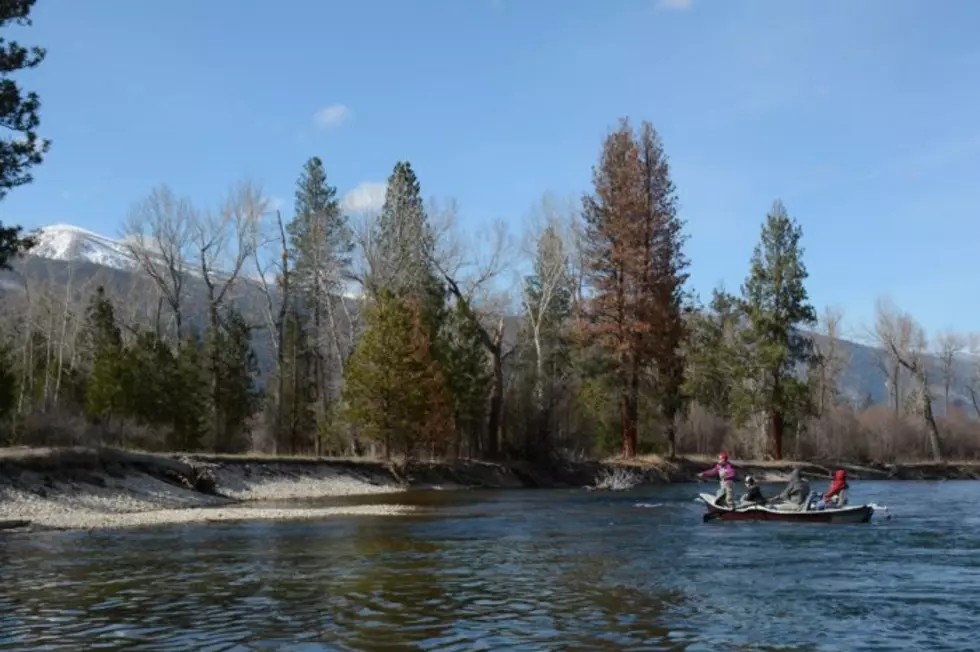
Group sues EPA over Montana water quality revisions
(Daily Montanan) A Montana environmental group is making good on its warning that it would sue the U.S. Environmental Protection Agency to halt the revision of water quality standards for streams and rivers in the state, filing a complaint in federal court in Great Falls alleging that the federal regulator failed to a respond to the change of standards in time.
Upper Missouri Waterkeeper filed a notice it intended to sue on these grounds back in January, a necessary step under federal administrative procedure. At the time, Waterkeeper gave the EPA 60 days to either approve or disapprove a standards change put into law with the passage of Senate Bill 358 last session or face litigation.
The organization now says that the EPA has passed that timeline. The lawsuit contends the new standards for pollution from nutrients like phosphorous and nitrogen are incongruous with the federal Clean Water Act, and that EPA has missed a legal deadline to act on the proposed provisions — though whether the clock has actually started is not something upon which the parties agree.
“Under the Clean Water Act, states can’t lawfully roll back science-based standards that protect waterway health – as Montana has done – and put forth unproven and ineffective pollution control programs that let polluters off the hook for doing their fair share to protect water quality,” said Guy Alsentzer, director of Upper Missouri Waterkeeper, in a statement. “This lawsuit calls on EPA to do its job and ensure the state of Montana follows the law and uses science, not political whims, to safeguard the public’s right to fishable, swimmable, drinkable water and healthy rivers.”
In the background is a protracted, ongoing debate stemming from the passage of SB358, a bill that rolls back the current numeric standards for measuring nutrient loading in many Montana waterways, reverting to standards based on narrative descriptors and the characteristics of individual watersheds.
Supporters of the bill in the Legislature and regulated entities like cities argued that the numeric standards were too difficult and costly to achieve with present technology, and that the same effect could be accomplished with properly applied narrative standards. Upper Missouri Waterkeeper and other environmental groups, however, say the more descriptive standards called for in SB358 are neither proactive or protective enough to pass federal muster.
The EPA has to review revisions to state water quality standards for compliance with the federal Clean Water Act. The heart of the disagreement laid out in the lawsuit is whether the agency still has time to act, or whether, as Alsentzer would argue, it’s slow-walking its response.
SB358 directs the Montana Department of Environmental Quality to draft rules to implement the bill, a process that’s playing out with the input of an advisory body called the Nutrient Workgroup, of which Alsentzer is a member. But building consensus around the actual substance of the rulemaking has taken longer than the department expected, and it’s split the process into two chunks as a result.
DEQ finalized what it’s calling a “framework” rule earlier this month. The rule lays out the skeleton of one of the regulatory structures mandated in SB358, an “adaptive management program which provides for an incremental watershed approach for protecting and maintaining water quality” in a manner that prioritizes the minimization of phosphorous, to quote the bill’s text.
The department, under the rule, will adopt rules for the development of an adaptive management program “under which point source dischargers whose discharges include total phosphorus and/or nitrogen” can apply for discharger permits.
The adaptive management plan must include a watershed monitoring plan that quantifies nutrient loading from pollution sources within an individual watershed and evaluates the impact of nutrient loading on “beneficial uses” through monitoring of response variables — in other words, the physical manifestations of nutrient pollution.
However, DEQ has still yet to actually complete this process, a result of its efforts to heed the desires of the array of stakeholders represented on the nutrient work group, the department says.
“Substantive rules setting forth specifics of the adaptive management program, as well as the required deletion of state numeric nutrient standards, are not part of this rulemaking. The substantive rules and deletion of numeric nutrient standards will be addressed later in 2022,” the department wrote in response to comments it solicited in response to the framework rule.
Many of the comments were negative, criticizing narrative standards as vague, subjective and reactive and calling for DEQ to retain the current standards.
“Narrative water quality standards can and do protect the beneficial uses of state surface water bodies (examples of beneficial uses include aquatic life, recreation, and drinking water),” DEQ wrote in another response. “The department has developed narrative water quality standards for a variety of pollutants. In addition, the numeric water quality standards found in [current rule] only apply to a portion of state surface water bodies, while the remaining surface water bodies are protected by narrative nutrient water quality standards.”
Waterkeeper says the finalization of the rule, the immediate effective date in SB358 and the fact that the city of Helena has already attempted to apply for a wastewater permit renewal under the new standards all mean that the 90-day clock in the Clean Water Act for EPA to approve the rule revisions began long ago. In January, when Waterkeeper filed its notice of intent to sue, a DEQ spokesperson said the organization is misrepresenting the proper timeline and hasn’t yet formally submitted anything to the EPA.
The final rule package is expected in October.
